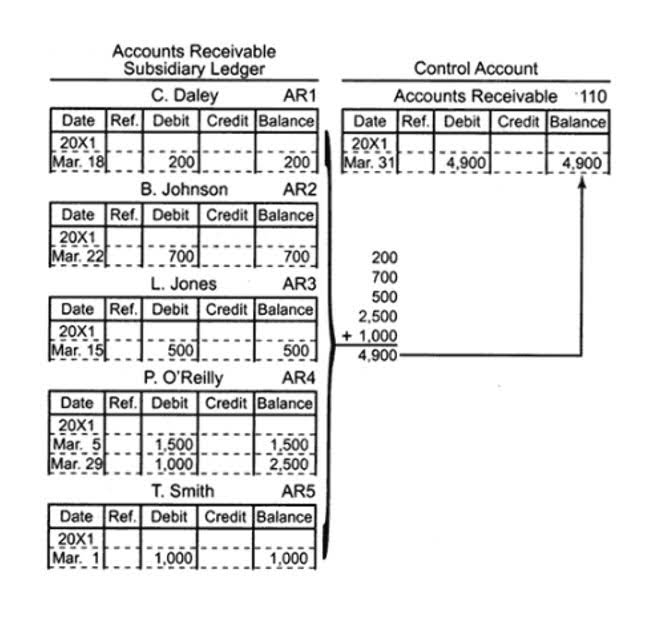Net Working Capital Formula: What It Is, How To Calculate It, and Examples

Get instant access to video lessons taught by experienced investment bankers. Learn financial statement modeling, DCF, M&A, LBO, Comps and Excel shortcuts. Even though the payment obligation is https://www.bookstime.com/ mandatory, the cash remains in the company’s possession for the time being, which increases its liquidity. The net effect is that more customers have paid using credit as the form of payment, rather than cash, which reduces the liquidity (i.e. cash on hand) of the company. Current assets are any assets that can be converted to cash in 12 months or less. Investing more money in inventory means keeping your cash idle and not putting it to use.

AP & FINANCE

A business has negative working capital when it currently has more liabilities than assets. This can be a temporary situation, such as when a company makes a large payment to a vendor. However, if working capital stays negative for an extended period, it can indicate that the company is struggling to make ends meet and may need to borrow money or take out a working capital loan. Aside from gauging a company’s liquidity, the NWC metric can also provide insights into the efficiency at which operations are managed, such as ensuring short-term liabilities are kept to a reasonable level. It is an indicator of operating cash flow, and it is recorded on the statement of cash flows. And the cash flow is one of the important factors to be considered when we value a company.
What is Cash Flow Forecast: Advantages, Examples & Mistakes
While this doesn’t always indicate financial health, businesses should manage their working capital carefully to have adequate liquidity and meet short-term obligations. The final net working capital figure, in this case, $405,000, provides valuable insights into your business’s financial condition. A positive net working capital indicates that your business is in good financial shape and can invest in growth and expansion. If it’s zero, your business can meet its current obligations but may need more investment capacity. Working capital is calculated by subtracting current liabilities from current assets. The current ratio, also known as the working capital ratio, provides a quick view of a company’s financial health.

What Does the Current Ratio Indicate?
- Technically, it might have more current assets than current liabilities, but it can’t pay its creditors off in inventory, so it doesn’t matter.
- The exact working capital figure can change every day depending on the nature of a company’s debt.
- A company’s balance sheet contains all working capital components, though it may not need all the elements discussed below.
- But it is important to note that those unmet payment obligations must eventually be settled, or else issues could soon emerge.
- If your business is constantly struggling to maintain a healthy cash flow, you can improve your net working capital in a few ways.
The terms working capital itself signifies the amount of fund that the company possess at a point of time to meet the current financial obligations, without which the daily needs to the business cannot be satisfied. However, the net amount is calculated by deducting the current liabilities form the assets, which gives a clear idea about the funds available. The net working capital (NWC) metric is different from the traditional working capital metric because non-operating current assets and current liabilities are excluded from the calculation. The cash flow from operating activities section aims to identify the cash impact of all assets and liabilities tied to operations, not solely current assets and liabilities. The formula to calculate the working capital ratio divides a company’s current assets by its current liabilities. As of March 2024, Microsoft (MSFT) reported $147 billion of total current assets, which included change in nwc formula cash, cash equivalents, short-term investments, accounts receivable, inventory, and other current assets.
- If it experiences a negative change, on the other hand, it can indicate that your company is struggling to meet its short-term obligations.
- However, the net amount is calculated by deducting the current liabilities form the assets, which gives a clear idea about the funds available.
- Working capital is a basic accounting formula (current assets minus current liabilities) business owners use to determine their short-term financial health.
- Also, the Net Working Capital indicates the short-term solvency of your business.
- However, there are some costs involved in these hedging transactions, which could affect cash flow.
As mentioned above, the Net Working Capital is the difference between your business’s short-term assets and short-term liabilities. These include short lifespan and swift transformation into other forms of assets. Whether you’re a small business owner or part of a large corporate finance team, your organization needs cash to cover its business needs and pursue its goals for growth, investment, and innovation. Liquid assets are of capital importance (pun absolutely intended) in supporting this mission. A higher ratio also means that the company can continue to fund its day-to-day operations. The more working capital a company has, the less likely it is to take on debt to fund the growth of its business.

It appears on the balance sheet and is used to measure short-term liquidity, or how well a company can meet its existing short-term obligations while also covering business operations. Working capital is the amount of current assets left over after subtracting current liabilities. A negative amount indicates that a company may face liquidity challenges and may have to incur debt to pay its bills. Working capital represents a company’s ability to pay its current liabilities with its current assets. This figure gives investors an indication of the company’s short-term financial health, its capacity to clear its debts within a year, and its operational efficiency. Working capital is critical to gauge a company’s short-term health, liquidity, and operational efficiency.
- In other words, her store is very liquid and financially sound in the short-term.
- The result is the amount of working capital that the company has at that time.
- Working capital as a ratio is meaningful when compared alongside activity ratios, the operating cycle, and the cash conversion cycle over time and against a company’s peers.
- And then, we need to find the difference between the current assets and the current liabilities as per the net working capital equation.
A favorable net working capital ratio is 1.5 to 2.0, depending on the industry the business is in. Therefore, to adequately interpret a financial ratio, a company should have comparative data from previous periods of operation or its industry. In this case, the retailer may draw on their revolver, tap other debt, or even be forced to liquidate assets. The risk is that when working capital is sufficiently mismanaged, seeking last-minute sources of liquidity may be costly, deleterious to the business, or, in the worst-case scenario, undoable. On average, Noodles needs approximately 30 days to convert inventory to cash, and Noodles buys inventory on credit and has about 30 days to pay. For example, imagine the appliance retailer ordered too https://x.com/BooksTimeInc much inventory – its cash will be tied up and unavailable for spending on other things (such as fixed assets and salaries).
